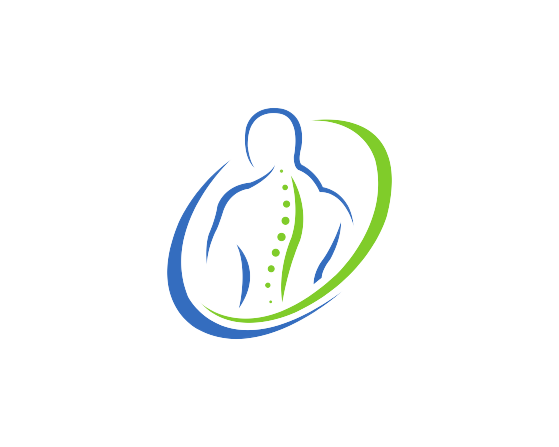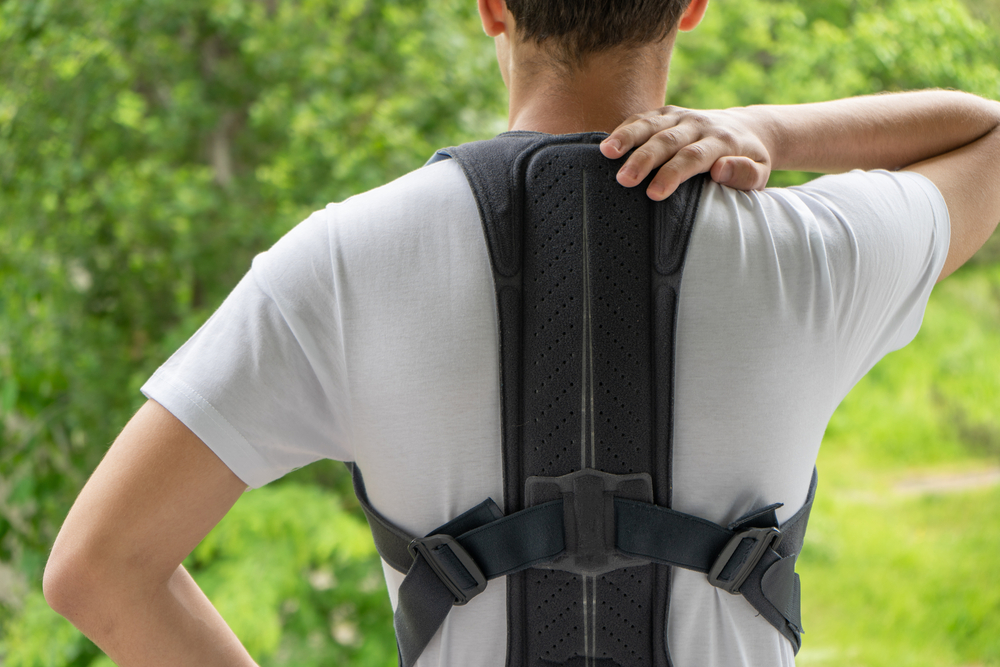Back pain is a common problem affecting millions worldwide and interferes with daily activities, whether it’s due to a sudden injury or a long-term condition.
While several treatment options are available, spinal bracing is a solution worth considering for many people seeking relief from a dull ache to severe, debilitating back pain.
Spinal bracing involves wearing a support device to help stabilize the spine and alleviate pain.
This article will explore why you should consider spinal bracing as a solution for your back pain and what you need to know before making a decision.
What Does a Back Brace Do?
A back brace is a tool to stabilize the back while wearing it. It might lessen back pain, avoid accidents, speed up healing, improve good posture, and align the spine properly.
A back brace often consists of solid plastic or metals, elastic compression bands, or a mix of the two. They are available in either prefabricated or custom-fitted versions. There are widely accessible prefabricated or “off-the-shelf” types that don’t need fitting and molding.
When to Consider Using a Back Brace
Back pain has numerous causes and treatments, which can be frustrating. Have you considered wearing a back brace to alleviate your back pain?
You shouldn’t wear a back brace without first consulting a doctor. A doctor’s assessment will help decide the brace required, how you should wear it, and if it is likely to be effective.
It’s crucial to remember that doctors only recommend back braces as one component of a thorough treatment program and that using a brace on your own or contrary to a doctor’s advice may lead to more significant injury and discomfort.
Categories of Spinal Orthoses
Lower back braces come in various materials to aid with multiple back pain issues, from extreme muscle tension to surgical recovery. The majority of back braces are constructed from similar materials. However, their firmness and postural stability vary.
1. Flexible Orthoses
You may get flexible orthoses or corsets to treat low back discomfort brought on by postural irregularities, trauma, or degenerative disc conditions.
Cotton and nylon are the most common materials used to make corsets. Corsets increase abdominal compression, which deweights the spinal components.
Vertical metal or plastic stays are frequently used in corsets to provide support and several motion restrictions at the brace’s front, back, and sides. Sacroiliac and lumbar belts often lack stays and are constructed of a more substantial fabric, which restricts motion more.
2. Rigid and Semi-Rigid Orthoses
Rigid braces have rigid panels covering the front, back, and occasionally the sides of the brace, as well as a strong layer of fabric, usually cotton or canvas, that surrounds the torso. Some designs have exterior bars made of solid plastic or metal.
Semi-rigid orthoses are a type of back brace that include aspects of both flexible and rigid orthoses.
By exerting pressure on the torso to maintain a proper posture for the spine and transfer weight from the vertebral canal to the abdomen, rigid and semi-rigid braces can help reduce lower back pain.
It also offers excellent stability to relieve tension from the spine’s muscles, joints, discs, and nerve roots, which are vulnerable to weakness or injury.
Conditions That May Improve From Spinal Bracing
In addition to other noninvasive methods, a back brace may aid in recovering and relieving the following conditions.
Post-Operative Recovery
Following spine surgery, doctors may recommend a rigid brace to reduce tension on the spinal column, enhance stability, and restrict movements and micro-motions to create a favorable therapeutic setting.
The most frequent justification for post-surgical bracing was to restrict activities and movements. Depending on a client’s condition, doctors typically advise back braces between 3 and 8 weeks after the surgery.
Isthmic Spondylolisthesis
A rigid back brace can dramatically decrease the number of vertebral slippages, enhance walking capacity, and reduce pain in patients with isthmic spondylolisthesis.
A rigid brace prevents excessive mobility at the broken segment, reducing pain and minimizing harm to the muscles, joints, and nerves.
Spondylolysis
Similar to isthmic spondylolisthesis, doctors may advise a rigid or semi-rigid brace to reduce uncomfortable micro-motions at a broken vertebral level, lessening discomfort and helping the fractures repair.
A lumbar brace may avoid or lessen spinal slippage (isthmic spondylolisthesis).
Osteoarthritis
A rigid or semi-rigid back brace may reduce spinal osteoarthritis instabilities and uncomfortable micro-motions.
Additionally, a brace can lessen stress on the troubled facet joints, reducing discomfort and facilitating activities of daily living like rising from a sitting position or vice versa.
Compression Fractures of the Vertebrae
A rigid or semi-rigid back brace may be advised for vertebral compression fractures to lessen tension on the spinal column and minimize micro-motions at the fractured or damaged vertebral level.
Lumbar Herniated Disc and Degenerative Disc Disease
A rigid or semi-rigid back brace can aid in maintaining and lessening micro-motions at the damaged spinal segment when a spinal disc ruptures and herniates.
Additionally, a back brace can help support part of the weight that the discs typically support by reducing twisting and bending.
Spinal Stenosis
The purpose of bracing for lumbar spinal stenosis is to lessen tension and stop micro-motions in the lower spine, which can irritate the nerve roots and cause discomfort in the radicles.
In some circumstances, a brace might assist with posture adjustment or weight transfer to the stomach to relieve strain on the spine.
Muscle Strain and Tension
Doctors may recommend a flexible back brace to treat low back muscular strain in uncommon circumstances.
By relieving tension on the spine and lowering the strength required in the muscles to sustain the spinal column, a back brace can assist in relieving muscle tension.
Additionally, the heat from the brace helps ease tight muscles and assists in relieving discomfort. Generally, wearing a back brace for more than two to four days is not advised in muscle weakness or injury cases.
Benefits of Wearing Back Braces
Immobilization
Moving around too much might cause back pain, especially if you’ve had spinal surgery or a back injury. In some circumstances, immobilization is essential for a successful back recovery.
In this situation, a back brace is helpful. A back brace stops or limits uncomfortable motions, including spine twisting and bending to the side, front, or back.
Limiting uncomfortable postures and motions can help you avoid using your back to its full extent, reducing back discomfort and the risk of subsequent accidents. Proprioception, a measure of body positional awareness, is also increased, enabling the user to alter posture for better back health deliberately.
Promotes Better Posture
Many of us hunch forward and bend our spines. Bad posture and excruciating back pain are the results of this. Poor posture also weakens your spine, leading to abnormalities and increasing your risk of injury.
The best way to ensure your spine is in good alignment is to wear a back brace, pushing your spine into a straighter position. Use your back brace when you realize your posture is becoming problematic.
Relieves and Prevents Back Pain
People with various kinds of back pain observe that particular actions and postures worsen it. Your back must restrict specific movements for it to recover. In this situation, a back brace is helpful.
A back brace stops unneeded motions that worsen back injuries. It straightens your spine and strengthens the muscles in your back. Back pain will lessen as your back begins to improve.
Back braces also restrict your spine, intervertebral discs, and vertebrae from their primary sources of support. It lessens the strain these tissues experience from supporting your back, which reduces pain.
It Assists in Strengthening Your Back and Core
Since your core is the center of your body, it should be that region that supports your body, not your back. However, many people have poor cores, so they rely on their backs for stability. But this results in discomfort and perhaps harm.
Your back and core will benefit greatly from wearing a back brace. A back brace encourages you to sit straight and tuck your stomach in. As a result, your abdominal muscles become stronger because the back brace forces them to absorb the assistance your back is being forced to provide.
Additionally, by pulling the muscles into alignment, a back brace will aid in strengthening your back and spine. Wear back braces designed for exercise to reap the most significant benefits from improving. These are perfect to wear while working out.
Holistic Treatment Alternative
Many pain sufferers are looking for alternative pain relief methods due to addiction to painkiller use. If back pain is your problem, a back brace is an efficient, holistic treatment choice.
Back braces do more than just mask pain. They help you stand straighter, assist your back, and build your muscles. It relieves a great deal of pressure from your back, allowing it to heal and your spine to be pain-free.
Back braces also stop your back issue from getting worse. You’ll have a lower chance of getting hurt, experiencing more significant pain, or getting other back and spine conditions.
Simple to Wear
Back braces are simple to put on and are frequently hidden by clothing. It’s because they have a concealable design beneath clothing and are simple to attach.
However, there are some guidelines to follow while selecting a back brace. Wear the appropriate size first. You’ll require measurements, including the length of your back and clothing.
You’ll know the back brace is the right size when it completely encloses your lower back and tailbone. Additionally, it shouldn’t be excessively loose or tight.
Components for Successful Spinal Bracing
The following are some variables that have been linked to successful spinal bracing.
1. Putting on the Brace as Recommended
One of the essential requirements for success is wearing the back brace consistently. Braces can be challenging for various reasons, such as pain or disruption of everyday activities.
A doctor can adjust a back brace if it is too heavy or painful. Before discontinuing the brace altogether, you should speak with a doctor.
2. Seeing a Brace as a Supportive Tool
When back bracing is viewed as advantageous, and a positive outlook is kept toward its impacts, back bracing produces more efficient outcomes.
3. Inspiration and Assistance
Support and encouragement from loved ones, friends, or coworkers can help change opinions regarding a back brace and its effects.
4. Not Relying on the Brace to Provide Long-Term Relief
Back braces are often advised as a temporary solution. Long-term use of a brace increases muscle damage and reliance on the device, which can damage the back, raise the risk of an accident, and intensify discomfort.
Bottom Line
Spinal bracing can be an effective way to provide relief for back pain and various spine conditions. Bracing can reduce pressure on the affected area and alleviate pain by supporting the spine.
However, it is essential to seek the advice of a healthcare professional before starting any bracing treatment, as they can determine the best type of brace for your specific condition and ensure that you use it correctly.
While spinal bracing may not cure underlying conditions, it can help manage symptoms and improve quality of life.
Remember, spinal bracing should always be used with other forms of treatment, such as physical therapy and medication, to achieve the best results.
For commercial back pain remedies, please check out the following links and support our affiliates:
Back Pain Breakthrough – A Movement and posture improvement program
My Back Pain Coach – A trainer to help improve back pain symptoms
Unlock Your Spine – Better spinal alignment for pain relief
Flexafen – A supplement for helping to improve mobility
Nervogen – A supplement to help with neuropathy
ArticBlast – Topical pain reliever liquid
Phytocet – CBD Pain relief supplement


